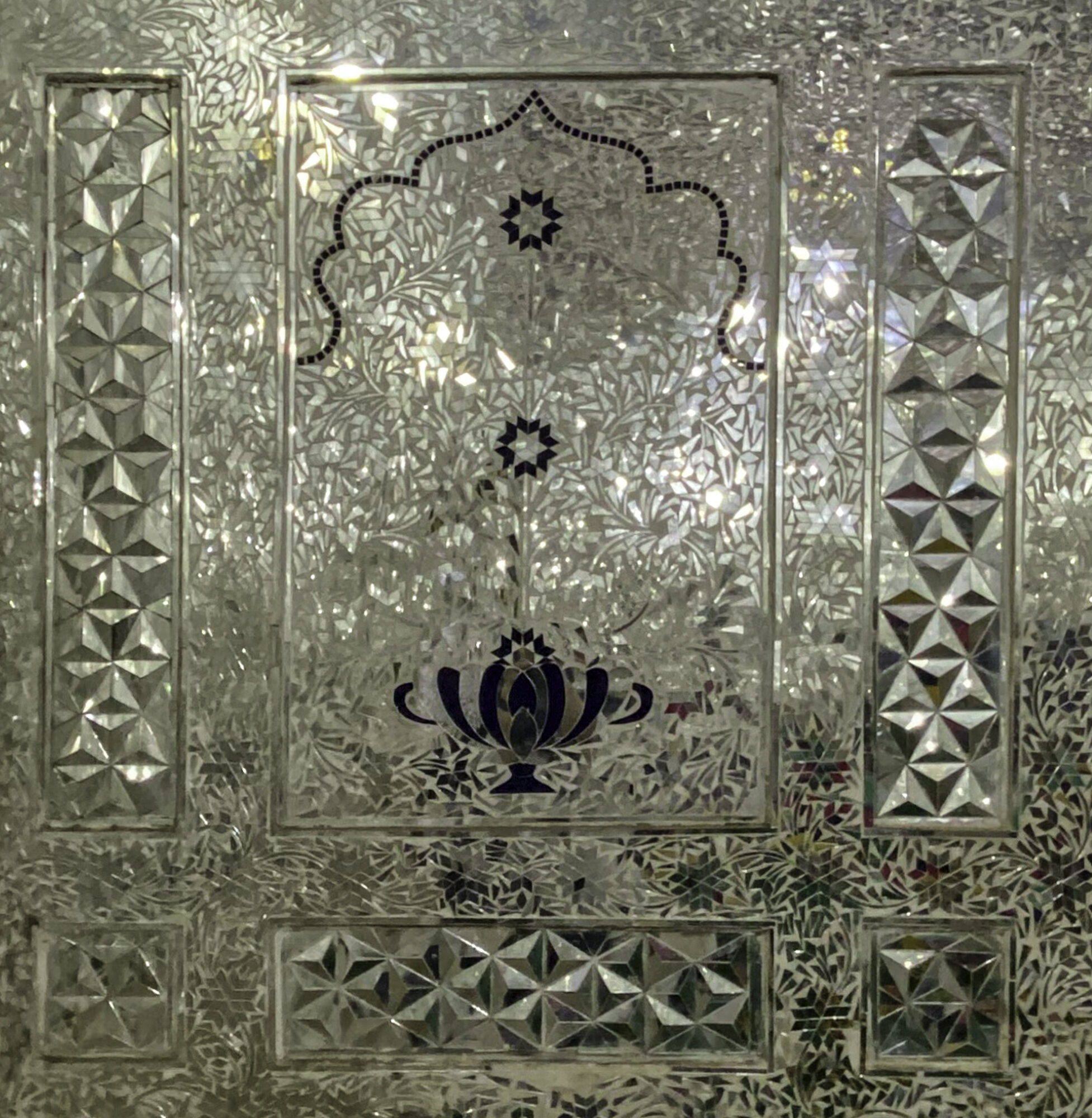Postcard from Shah Yousaf Gardezi Shrine, Multan
We parked the cars next to an alley, at the end there was a wall made of rough red bricks. We walked through a modest gateway and found ourselves in Shah Yousaf Gardezi Shrine’s courtyard, outside was noisy and busy while inside was a world of quiet and prayer.
In the centre is a square, flat roofed tomb. The outside is covered in Multan’s famous blue and white glazed tiles, while inside is covered in mirrorwork, known as aina-kari. Small, finely cut mirrors are arranged in geometric and/or flowers and plants. Aina-kari is supposed to have begun in Iran however some say that Venetian artists brought the art form to Iran.
Shah Yousaf Gardezi arrived in Multan from Afghanistan around 900 years ago. The story is that he arrived riding a lion and holding a live snake with pigeons flying overhead. Gardezi is said to have brought the Twelver Branch of Shia Islam to the city. Shah Yousaf Gardezi died in 1136 and his tomb is recorded as having been originally built in 1152, rebuilt in 1548.
As we walked around the shrine the evening call to prayer started. Pigeons took off in flight around the tomb and settled in and around the tomb. I think Shah Yousaf Gardezi would be pleased that the pigeons are still there.
Outside the main entrance to the tomb
Inside the tomb
Example of aina-kari inside the tomb
Close up of aina-kari
Tomb ceiling
Multani blue and white tile work
Close up of tile work
I like to imagine when this tree was planted and how many people have walked past and sat underneath
Close up of decorative tile work
Walking around each side of the tomb
Inside the courtyard
Courtyard
Fresh rose petals scattered over a grave
Lighting of candles at prayer time
















